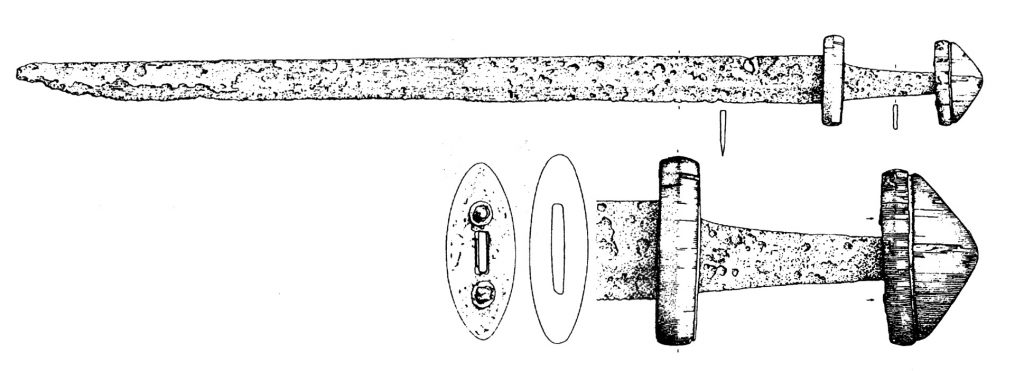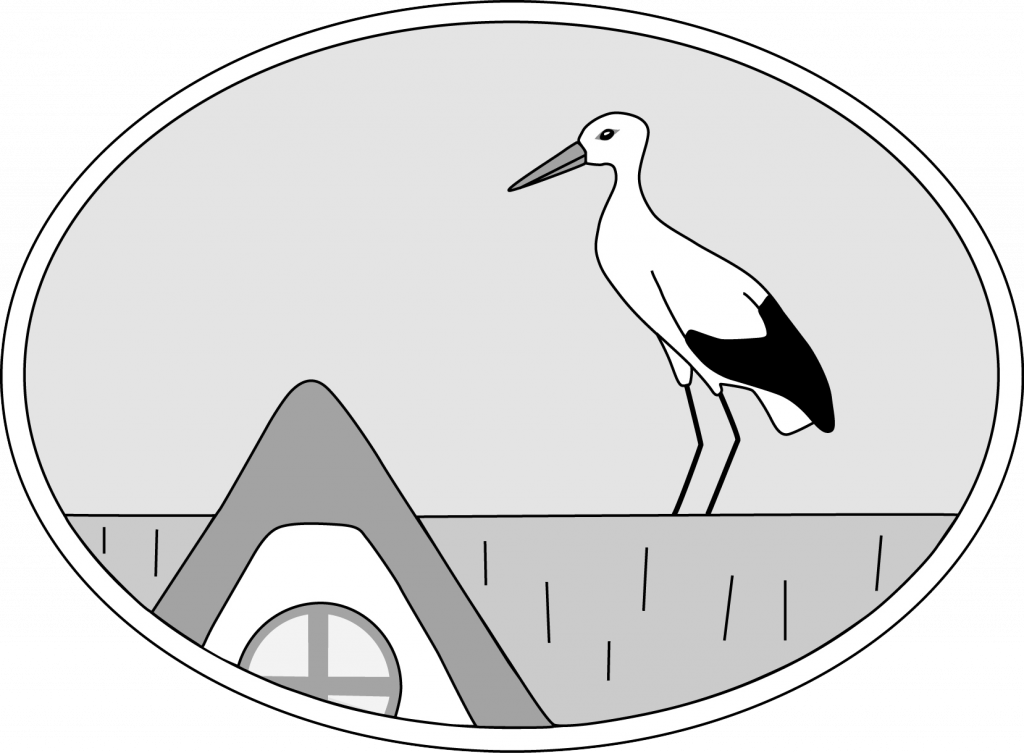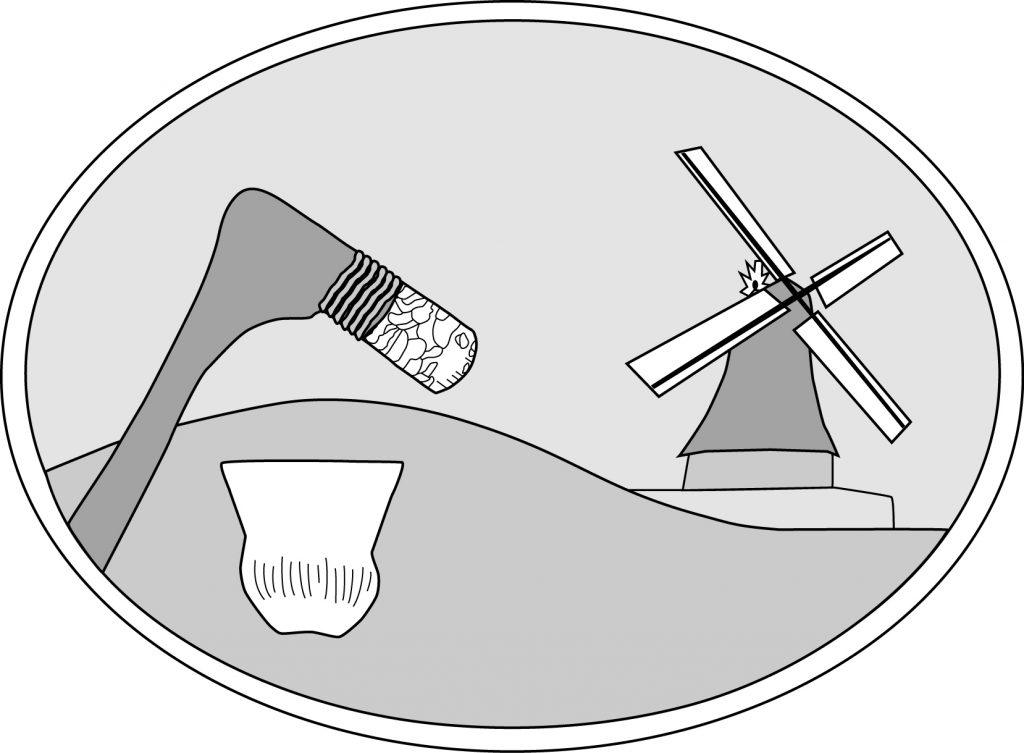
About 450 m southwest of the bridge at Fünfmühlen a single-edged cutting sword, a so-called Seax, was found in the Alte Sorge, a nature reserve, during excavation work. At 48 cm long it was rather short and therefore called a seax knife. Saxes were common from the Iron Age to the High Middle Ages, but the special shape of this find proves that it dates from the Viking Age (800-1050 AD). In the past, it must have been a magnificent sight: pommel and quillon were bound with narrow gold braided bands on the show side, and the upper and lower sides of the sword were also gilded.
The Viking seax knife was used as a cutting weapon in battle, together with a round, wooden shield of up to 100 cm in diameter. At the same time, however, the seax was also an everyday tool that could be used for woodwork among other things. Basically, a seax knife was an affordable weapon: while the price for a long sword with a scabbard was about the same as the price of a horse, a simple short sword was only equivalent to the value of about 40 kg of grain. For the elaborately decorated specimen from the Sorge, however, the owner probably paid considerably more.
Accordingly, his anger about the loss must have been great. Although there are no known traces of settlements in the vicinity from the Viking Age, Viking merchant ships regularly sailed the nearby Treene. It is therefore not unlikely that Vikings also passed by the Sorge occasionally, perhaps to trade or to look for new land for settlement. On such an occasion, the weapon may have gone overboard and disappeared into the murky waters of the Sorge.



